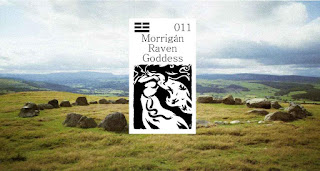New Moon (Wisdoms of the Heart)
The new moon represents the wisdom of the heart, which come with emotional and spiritual maturity. Spiritual traditions everywhere tell of the compassionate wisdom (or intelligence) of the heart. Knowledge is acquired from the implicit and tacit meanings of things in their essence.
Invoking Tenderness and Compassionate Knowing.
According to the old traditions, the moon is revered as the queen of the night, beauteous and fair. On seeing the new moon rising in the night, the men and women of old Scotland and Ireland bow gently, bending a knee in admiration. "Hail to thee, thou new moon, guiding jewel of gentleness!" Shining in the night sky as the queen maiden of guidance and good fortune, the new moon brings graciousness and maidenly joys to daily life. She signifies tenderness, compassion, and the intelligence of a loving heart.Along with reverence and rites concerning the sun, stars, and fire, lunar worship is a common feature of the old ways of the Celtic people. Alexander Carmichael, recording the prayers and customs of the Scottish Highlands and the Outer Hebrides in the late nineteenth century, observed these vanishing customs and rites, still then extant among the country people.
In the Island of Barra of the Outer Hebrides, the old men and women "make obeisance to [the new moon] as to a great chief. The women curtsy gracefully and men bow low, raising their bonnets reverently. The bow of the men is peculiar, partaking somewhat of a curtsy of the women, the left knee being bent and the right drawn forward towards the middle of the left leg in a curious but not inelegant manner." Carmichael records several invocations and prayers hailing the new moon, the jewel of the night sky:
"Hail to thee, thou new moon, guiding jewel of gentleness!
I am bending to thee my knee, I am offering thee my love.
I am bending to thee my knee, I am giving thee my hand,
I am lifting to thee mine eye, O new moon of the seasons.
Hail to thee, thou new moon, joyful maiden of my love!
Hail to thee, thou new moon, Joyful maiden of the graces!
Thou art travelling in thy course.
Thou art steering the full tides.
Thou art illuming to us thy face, O new moon of the seasons.
Thou queen-maiden of guidance.
Thou queen-maiden of good fortune.
Thou queen-maiden my beloved.
Thou new moon of the seasons!"
IF YOU ARE DRAWN TO THIS ORACLE, you are learning to see with the eye of the heart. There are meanings, understandings, and discernments known to the heart alone, and rarely seen or understood by the intellect, the discriminating mind.
When you begin to see with the eye of the heart, it will be as though a veil has been lifted before you. You will see more deeply into the nature of things, relationships, and events. Your discriminating mind will relax. With your actions more in accord with natural patterns around you, you will interfere less, allowing others and events to mature according to their own design and necessity. Your actions will be more secure and compassionate, supportive of what is implicitly good and natural. In time, these softer wisdom of the heart will bring you greater wisdom and nobility of character.

















